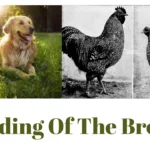Table of Contents
Introduction
Dwarf mongooses are tiny, fascinating creatures that can be found in the grasslands of Africa. As the continent’s smallest carnivore, they play a crucial role in the ecosystem. In this article, we’ll explore the life and habits of the dwarf mongoose, discuss their family structure, and learn how they thrive in their environment. We’ll also discuss the best ways to observe them on safari and the importance of conservation efforts to protect these captivating creatures.
The Dwarf Mongoose: Africa’s Smallest Carnivore
Physical Characteristics
The dwarf mongoose is the smallest carnivore in Africa, measuring only 7-10 inches in length and weighing between 200-350 grams. They have a slender body with short legs and a bushy tail. Their coat is reddish-brown, which allows them to blend into their surroundings easily.
Habitat and Distribution
Dwarf mongooses are native to the grasslands, savannas, and open woodlands of sub-Saharan Africa. They prefer areas with plenty of termite mounds and fallen trees, which provide them with shelter and a food source. Their range extends from South Africa to Ethiopia and from Angola to Tanzania.
The Family Life of the Dwarf Mongoose
Social Structure and Behavior
Dwarf mongooses are highly social animals that live in packs or herds, usually consisting of 12-15 individuals. The group is led by a dominant pair – an alpha male and an alpha female – who are the primary breeders. The other members of the group help raise the young, called “helpers,” and are usually closely related to the dominant pair.
Breeding and Baby Dwarf Mongooses
The breeding season of dwarf mongooses typically occurs during the rainy season, as this is when food is most abundant. The alpha female gives birth to 2-6 babies, known as pups, after a gestation period of about 53 days. The pups are born blind and helpless but are cared for by the entire group. They are weaned after 4-6 weeks and become independent at around 10 weeks.
The Fascinating World of the Dwarf Mongoose
Foraging and Hunting Techniques
Dwarf mongooses are diurnal, meaning they are active during the day. They are primarily insectivorous, with a preference for termites, but they will also eat small mammals, birds, reptiles, and even fruit. They are cooperative hunters, with pack members working together to locate food sources and flush out prey.
Territorial Behavior
Dwarf mongooses are highly territorial creatures, with each group having a home range of approximately 74 acres. They mark their territory with scent glands located on their cheeks, and they will defend their territory against rival groups. Conflicts between groups can be aggressive, with both vocalizations and physical confrontations.
Ecological Niche and Adaptations
The dwarf mongoose plays an essential role in the African grassland ecosystem. By preying on insects, particularly termites, they help control pest populations and maintain the balance of the ecosystem. Their adaptations, such as their small size and agility, allow them to navigate their environment and evade predators such as birds of prey and snakes.
Dwarf Mongoose on Safari
Wildlife Viewing Tips
Spotting a dwarf mongoose on safari can be an exciting experience. To increase your chances of seeing these elusive creatures, it’s best to visit their natural habitats, such as grasslands and savannas, during the early morning or late afternoon when they are most active. Look for signs of their presence, like termite mounds and fallen trees, where they may be seeking shelter or foraging for food. A good pair of binoculars and patience are essential, as dwarf mongooses can be quite shy and quick to disappear into the underbrush.
Responsible Tourism
When observing dwarf mongooses in their natural habitat, it’s essential to practice responsible tourism. This means keeping a respectful distance from the animals, not feeding them, and minimizing any disturbances to their environment. By following these guidelines, you can ensure that your visit does not harm the dwarf mongoose population and that future generations can continue to enjoy these fascinating creatures.
The Conservation Status of the Dwarf Mongoose
Threats and Challenges
Currently, the dwarf mongoose is listed as a species of “Least Concern” by the International Union for Conservation of Nature (IUCN). However, they still face threats such as habitat loss due to agricultural expansion, human encroachment, and climate change. Additionally, they are sometimes killed by locals who consider them pests due to their predation on poultry.
Conservation Efforts
Conservation efforts for the dwarf mongoose primarily focus on habitat preservation and education. By protecting their natural habitats and educating local communities about the importance of these animals in the ecosystem, conservationists hope to ensure the continued survival of the dwarf mongoose in the wild.
Conclusion
Dwarf mongooses are fascinating creatures that play a vital role in Africa’s grassland ecosystems. Their social behavior, hunting techniques, and adaptations make them a unique species worth protecting. By practicing responsible tourism and supporting conservation efforts, we can help ensure that future generations can enjoy the presence of these remarkable animals in the wild.
FAQs
What is the size of a dwarf mongoose?
The dwarf mongoose is the smallest carnivore in Africa, measuring only 7-10 inches in length and weighing between 200-350 grams.
What do dwarf mongooses eat?
Dwarf mongooses primarily eat insects, especially termites, but they also consume small mammals, birds, reptiles, and occasionally fruit.
How do dwarf mongooses raise their young?
Dwarf mongooses are highly social animals that live in groups. The alpha female gives birth to pups, and the entire group helps raise the young, sharing responsibility for their care.
Where can I see dwarf mongooses on safari?
Dwarf mongooses can be found in the grasslands, savannas, and open woodlands of sub-Saharan Africa. To spot them on safari, visit their natural habitats and look for signs of their presence, such as termite mounds and fallen trees.
What conservation efforts are in placeto protect the dwarf mongoose?
Conservation efforts for the dwarf mongoose focus on habitat preservation and education. By protecting their natural habitats and educating local communities about their ecological importance, conservationists aim to ensure the continued survival of the dwarf mongoose in the wild.









